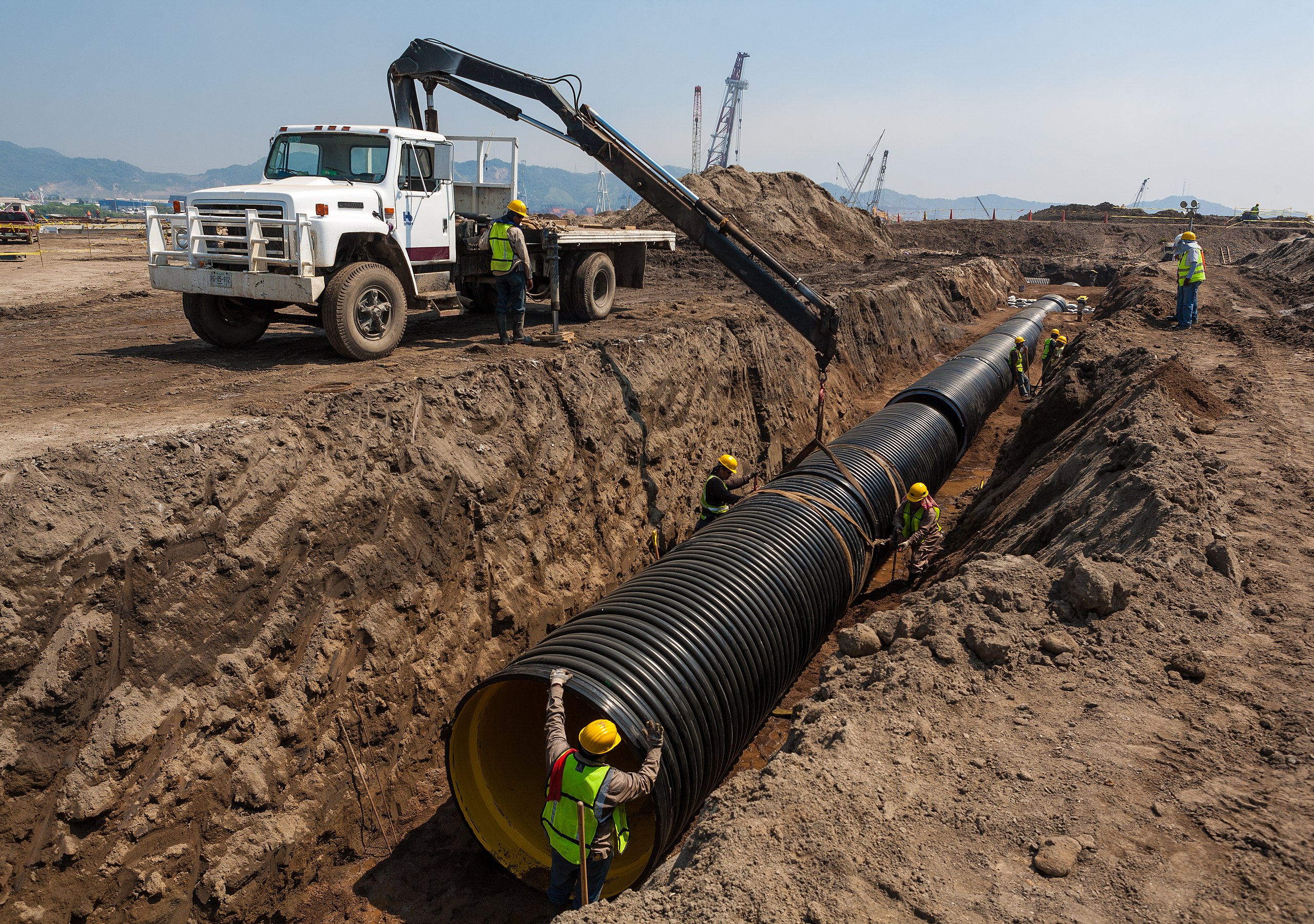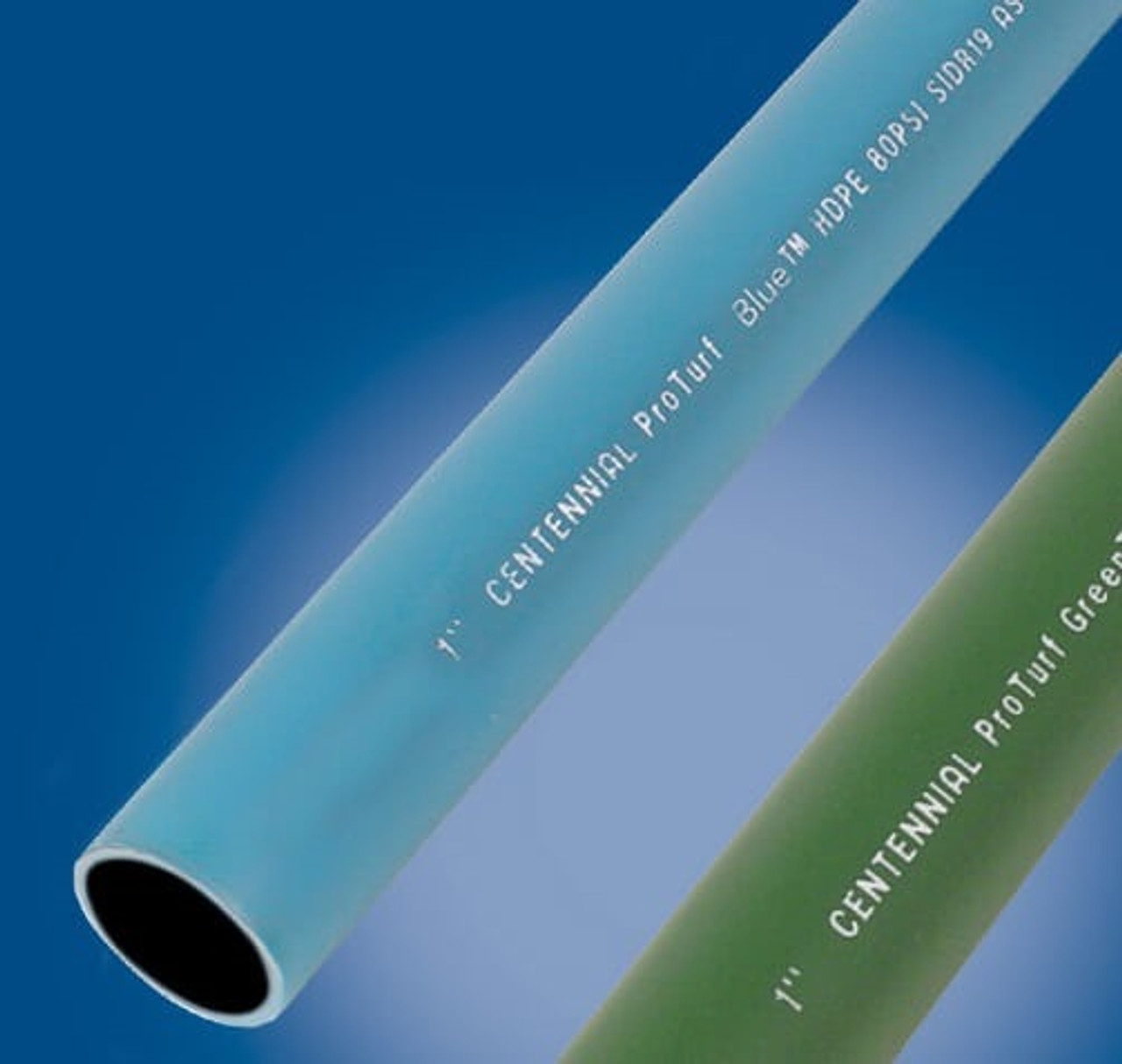Explore the Manufacturing Refine Behind High-Quality HDPE Pipe and Its Applications
The production process of top quality HDPE pipelines is elaborate and systematic. It begins with the choice of raw materials that boost performance. Following this, ethylene goes through polymerization to create resin, which is then shaped through extrusion. Quality control is critical, making certain that the end product satisfies rigorous criteria. However, the trip of HDPE pipelines doesn't finish with production. Their applications throughout different sectors expose a more comprehensive significance worth checking out.
Understanding HDPE: Properties and Advantages

High-density polyethylene (HDPE) is a versatile polycarbonate recognized for its sturdiness and resistance to various ecological variables. This material exhibits superb tensile strength, making it appropriate for requiring applications. Its low-density framework contributes to a lightweight item, helping with ease of handling and installment. HDPE likewise showcases amazing resistance to chemicals, which decreases destruction when revealed to extreme substances.
The material's low wetness absorption further improves its long life, making it excellent for usage in pipes and tank. In addition, HDPE is resistant to ultraviolet (UV) radiation, ensuring that products maintain their stability also when revealed to sunshine. Its flexibility allows for the development of elaborate forms without jeopardizing stamina. The green nature of HDPE, often stemmed from recycled materials, includes to its charm, promoting lasting practices in production. Generally, these buildings and advantages make HDPE a favored selection for various industrial and consumer applications.
Basic Material Selection for HDPE Production
The selection of resources for HDPE manufacturing is necessary to validate the end product meets the preferred specifications and top quality standards. High-density polyethylene (HDPE) is primarily generated from polymerized ethylene, stemmed from fossil gas such as natural gas or petroleum. The high quality of these feedstocks greatly influences the mechanical and thermal buildings of the final HDPE.
Ingredients additionally play a considerable function in improving HDPE's performance, including antioxidants, UV stabilizers, and colorants, which improve longevity and resistance to ecological factors. The selection process have to consider not just the chemical structure of the raw materials but likewise their processing features to assure efficient manufacturing.
In addition, the sourcing of raw materials ought to prioritize sustainability and conformity with ecological policies, as accountable methods are necessary in today's market. Eventually, mindful basic material option lays the structure for producing premium HDPE pipes suitable for varied applications.
The Extrusion Refine: Forming HDPE Pipeline
The extrusion procedure plays an important duty fit HDPE pipes, starting with meticulous material preparation methods that guarantee excellent flow and consistency. Similarly important is the layout of the die, which directly affects the last dimensions and surface high quality of the pipeline. With each other, these variables contribute significantly to the performance and high quality of HDPE pipeline production.
Material Preparation Methods
Effective production of HDPE pipelines begins with precise product prep work strategies, especially the extrusion procedure. Throughout this stage, high-density polyethylene material is first dried to eliminate moisture, making sure excellent circulation characteristics. The resin is then fed into the extruder, where it goes through heating and melting, changing right into a thick state. This home heating procedure is very carefully controlled to keep the product's honesty and efficiency. The molten HDPE is required with a die, forming it into a continuous pipe type. Correct temperature monitoring throughout extrusion is essential, as it directly impacts the product's buildings and the last product top quality. When shaped, the HDPE pipeline is cooled and reduced to defined lengths, ready for succeeding handling and applications.
Die Style Value
Accuracy in die style plays an important role in the extrusion procedure of HDPE pipes. The die functions as the final shaping tool, directly influencing the pipeline's dimensions, wall surface density, and surface area coating. A properly designed die warranties consistent product flow, decreasing flaws such as abnormalities and vulnerable points. The geometry of the die need to be enhanced to suit the details properties of HDPE, including its viscosity and thermal actions during extrusion. In addition, the cooling price of the product as it goes through the die can substantially affect the pipeline's architectural integrity. Investing in sophisticated die technology is important for producers aiming to produce high-quality HDPE pipelines that fulfill sector criteria and client assumptions.
Quality Assurance Steps in HDPE Production
Although different elements affect the quality of HDPE pipeline production, effective high quality control measures are essential to assure consistency and dependability in the end product. Key quality assurance methods consist of strenuous product assessment, validating that the raw polyethylene fulfills established requirements for purity and thickness. Throughout the extrusion process, parameters such as temperature, pressure, and cooling time are carefully monitored to keep dimensional precision and structural honesty
In enhancement, post-production testing is essential; producers usually perform hydrostatic tests to examine the pipeline's toughness and resistance to stress. Aesthetic assessments for surface area defects even more enhance high quality assurance. Accreditation from relevant criteria companies, like ASTM or ISO, offers an extra layer of reputation. By carrying out these complete high quality control actions, suppliers can decrease issues, enhance efficiency, and make sure that the HDPE pipes fulfill the certain requirements of numerous applications, eventually leading to consumer fulfillment and count on the get more item.
Applications of HDPE Pipe Throughout Industries
HDPE pipes are made use of across numerous fields because of their resilience and versatility. In water distribution systems, they assure effective distribution, while in wastewater administration, they provide trustworthy services for waste transportation. Furthermore, agricultural watering networks benefit from HDPE's resistance to rust and flexibility, making it an optimal choice for modern-day farming techniques.

Water Distribution Solutions
A significant variety of markets depend on high-density polyethylene (HDPE) pipelines for reliable water circulation systems. Known for their longevity and resistance to deterioration, HDPE pipes are commonly made use of in local water networks, farming watering, and commercial applications. Their lightweight nature helps with very easy handling and setup, lowering labor costs and time. Furthermore, HDPE pipelines can fit numerous pressure levels, making them ideal for both low and high-pressure systems. American Plastics HDPE Pipe for Oilfield. The adaptability of the product enables seamless combination into existing facilities, lessening the need for substantial excavation. Furthermore, HDPE's resistance to chemical leaching assurances that the water supplied continues to be safe and tidy, making it an excellent choice for preserving the top quality of potable water across various fields
Wastewater Administration Solutions
Effective water circulation systems likewise pave the means for ingenious wastewater monitoring options, where high-density polyethylene (HDPE) pipes play a considerable function. article source Renowned for their resilience and resistance to corrosion, HDPE pipelines are suitable for transferring wastewater in various setups. Their flexibility permits very easy setup in complicated environments, minimizing the need for substantial excavation. In addition, HDPE's smooth interior surface decreases rubbing, improving flow prices and performance. These pipes are likewise resistant to chemical leaching, making certain that contaminants do not jeopardize the surrounding setting. Industries, towns, and therapy centers increasingly count on HDPE pipelines for their integrity and long life, making them a recommended selection for modern wastewater management systems. This adaptability underscores the vital value of HDPE pipelines throughout many applications.
Agricultural Watering Networks
Agricultural irrigation networks benefit considerably from using high-density polyethylene (HDPE) pipelines, which supply efficient and trusted water shipment to crops. HDPE pipelines are light-weight, making them simple to transfer and mount, while their versatility permits different arrangements in varied terrains. These pipelines demonstrate excellent resistance to deterioration, chemicals, and UV radiation, ensuring longevity in extreme agricultural environments. In addition, their smooth interior surface decreases friction loss, enhancing water flow and minimizing power expenses connected with pumping. The long life of HDPE pipes, frequently surpassing 50 years, adds to reduce maintenance and substitute expenses. Farmers increasingly depend on HDPE pipelines to enhance watering efficiency and promote lasting agricultural techniques, ultimately leading to enhanced plant yields and resource preservation.

Future Patterns in HDPE Pipe Modern Technology
As the need for sustainable and efficient infrastructure expands, innovations in HDPE pipeline innovation are poised to transform various industries. Emerging fads consist of the assimilation of wise modern technologies, such as sensing units and IoT capacities, which facilitate real-time surveillance of pipeline conditions, lowering upkeep prices and preventing leaks. Additionally, the development of advanced manufacturing techniques, such as 3D printing, is enabling the manufacturing of complex, customized pipeline styles that deal with certain job demands.
The focus on recycling and circular economic climate techniques is driving the innovation of HDPE pipes made from recycled materials, improving sustainability. Boosted jointing methods, such as electro-fusion and mechanical installations, are also improving setup effectiveness and dependability. Ultimately, the growing emphasis on environmental policies is pushing manufacturers to embrace greener production processes, guaranteeing that HDPE pipes not only meet sector requirements but additionally cultivate an even more sustainable future for infrastructure development.
Regularly Asked Concerns
Just How Does HDPE Compare to Other Plastic Materials?
HDPE surpasses numerous other plastic products concerning longevity, chemical resistance, and flexibility. Its reduced density and high tensile stamina make it excellent for numerous applications, typically surpassing options in both performance and durability.
What Are the Environmental Influences of HDPE Manufacturing?
The environmental impacts of HDPE manufacturing consist of greenhouse gas exhausts, energy intake, and potential contamination from making processes. In addition, improper disposal can result in soil and water contamination, increasing concerns regarding long-lasting eco-friendly effects.
Can HDPE Pipes Be Recycled?
Yes, HDPE pipelines can be reused. Many facilities Go Here approve used HDPE for processing, changing it into new products. This reusing adds to sustainability initiatives, decreasing plastic waste while conserving sources and power in the production cycle.
What Is the Life-span of HDPE Water Lines?

Just How Do Temperature Variations Impact HDPE Pipeline Efficiency?
Temperature level variations considerably influence HDPE pipeline efficiency, influencing flexibility and stamina. Heats can cause softening, while reduced temperature levels might create brittleness, eventually influencing the pipeline's longevity and suitability for numerous applications in varied settings.